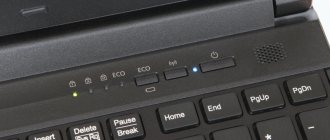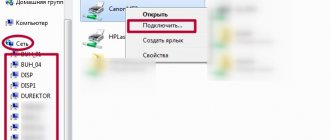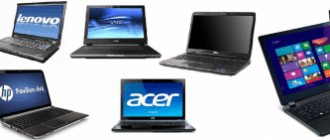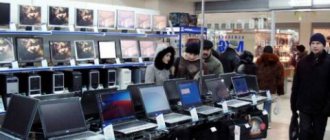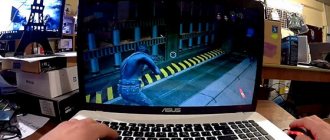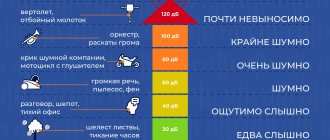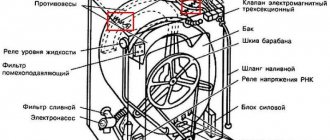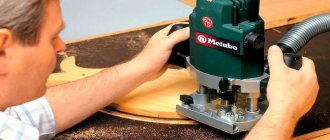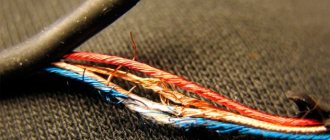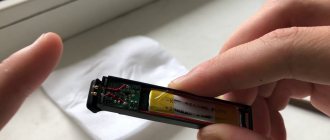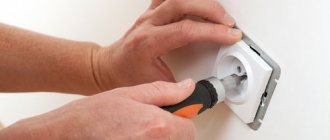Hi all! Today we will talk about the problem when the laptop makes noise, groans, buzzes, hisses or makes loud sounds while working. You should understand that such a mini-PC can make noise during active work: during games or when training neural networks. Some laptops are noisier and some are less - and this is quite normal. It's another matter when the laptop started making a lot of noise lately. There are three main reasons:
- Fans – everything is trivial here, the more the laptop heats up, the more speed increases.
- Hard drive – after 7-10 years with constant use of the HDD, it begins to gradually fail. When you turn it on, you hear not a noise, but a distinct grinding noise. He may appear and disappear.
- CD/DVD rom - see if you have a disc inserted into the drive. It may spin when you turn on or activate some programs.
We will talk about all the reasons in the article. If you have any questions or have any additions, write in the comments.
Cleaning
Why is the laptop fan noisy? There are also two reasons:
- Due to overheating or improper control on the part of the system, there is an increased fan speed.
- The cooler is broken or the rotation path of the fan is bent, then you can hear a constant grinding or small tapping noise.
In 90% of cases, a laptop hums due to a large layer of dust in the tubes or on the coolers. Turn off the laptop and remove the battery.
Now unscrew all the bolts and remove the back cover.
Your task is to clean the coolers as much as possible from dust; if you are afraid to climb further, then you can try to vacuum all visible holes with a vacuum cleaner. But it is advisable to completely remove the cooling system with fans and metal tubes. We also need to check the thermal paste, which may have dried out - this can lead to the fans constantly increasing in speed, but not cooling the processor and video card enough.
Another problem is that the design of laptops differs depending on the manufacturer, as well as the model - so I advise you to watch the universal instructions in the video:
If the noise remains, then the fan is most likely damaged. In this case, you can try to lubricate it. But most likely you will have to change it to a new one. Lubrication usually helps for a few months, so it will need to be changed anyway.
Causes of noise
Perhaps the main cause of noise in a laptop is the fan (cooler), and its strongest source. Typically, this noise is something like a quiet and constant “hum.” The fan expels air through the laptop body - this is what causes this noise.
Usually, if the laptop is not heavily loaded, it operates almost silently. But when you turn on games, when working with HD video and other resource-intensive tasks, the processor temperature rises and the fan has to start working several times faster in order to have time to “expel” hot air from the radiator (about processor temperature). In general, this is a normal state of the laptop, otherwise the processor may overheat and your device will fail.
The second loudest noise level in a laptop is probably the CD/DVD drive. During operation, it can make quite a lot of noise (for example, when reading and writing information to a disk). It is difficult to reduce this noise; you can, of course, install utilities that will limit the speed of reading information, but most users are unlikely to be satisfied with the situation when they instead of 5 minutes. working with the disk, 25 will work... Therefore, there is only one piece of advice here - always remove the disks from the drive after you have finished working with them.
The third loudest noise level can be the hard drive. Its noise often resembles clicking or grinding. From time to time they may not exist at all, and sometimes they can be quite frequent. This is how the magnetic heads in a hard drive make noise when their movement becomes “jerky” for faster reading of information. We’ll look at how to reduce these “jerks” (and therefore reduce the noise level from “clicks”) below.
Malicious code and junk
Over the course of a long period of work, the computer usually becomes clogged with unnecessary programs, caches, and malicious viruses. Your task:
- Clean your computer from unnecessary programs.
- Remove everything from startup.
- Turn off unnecessary and unnecessary services that clog memory.
- Clear your hard drive of temporary files.
- Scan the system for malware.
I have already written about all this in detail in separate articles, so let’s go there:
- Windows 7
- Windows 10
Can side effects occur with viral exposure?
Unfortunately, the presence of viruses in the system cannot be ruled out. Many people believe that viral threats cannot directly affect hardware. This is not entirely true. Through control drivers, any equipment can be disabled. In this regard, it is enough to recall a virus that once “walked” on the Internet, which, when introduced into a system, focused maximum energy at one point on the screen, after which the cathode ray tubes of old monitors simply burned out. To prevent the penetration of threats, you cannot rely only on a standard antivirus, since it may not detect some types of threats. At the very least, for prevention, scan your laptop with third-party portable programs at least once a week.
Programmatically
Many modern laptops, when installing standard software, have a special application on board that helps to properly control the speed of rotation of the screws. If you don’t have this program, or you haven’t updated it for a long time, then I advise you to go to the official website and download the full utility package along with the driver.
- We find the full name of the laptop, which is usually found on the device label.
- Now go to the official website of the manufacturer. You can also enter the model name into a search engine and find the desired link right away.
- Next, go to the support page and download all the main drivers and utilities.
I advise you to reinstall everything. If the list does not include a special utility that controls the speed of the cooler, you can use third-party applications:
- SpeedFan is a convenient, understandable and, most importantly, free program.
- AMD OverDrive - This software is most often used for overclocking, but it also controls the operation of the fans well.
- MSI Afterburner - if you suspect that it is the video card that is making a lot of noise, then you can try this software.
Cooler speed adjustment programs
If the laptop cooler hums even in a calm state, but there are no obvious signs of overheating, this may indicate that the blade speed is too high.
Fortunately, it can be easily reduced using one of the programs described below:
- SpeedFan is a free application with a simple and intuitive interface.
Allows you not only to regulate the speed of all coolers inside the system unit of a PC or laptop, but also to display current temperature readings (however, the readings may differ slightly from the real ones, which depends on many factors).
All settings are made through the “Configure” tab. You can either set the desired rotation speed or specify the temperature above which the iron should not heat up.
- AMD OverDrive - Most people use this utility as a tool for software overclocking of processors from the company of the same name, but its functions also include adjusting the rotation speed of coolers.
It is possible to set a specific value or force the program to adjust it automatically (increase under load and decrease when idle).
- MSI Afterburner is a program for overclocking video cards.
In addition to controlling frequencies and voltage, it allows you to control cooler speed (automatic and manual modes). The user will be able to configure and save profiles depending on his specific tasks.
You can also try to adjust the cooler speed through the BIOS.
To do this, when turning on the laptop, press the Del key (some manufacturers use other keys), and then find the Power or H/W Monitor Configuration section in the window that opens.
They should contain an item responsible for the speed of the fans.
Set the percentage value you need, then save the changes and start the system. But do not overdo it - if the speed is minimal, this can lead to overheating and component failure.
BIOS
In the BIOS you can find the “PWM” parameter, which is responsible for the speed of revolutions. It can be reduced if you are sure that the cause of the noise and hum is precisely high speeds, and not dust or dried thermal paste.
You can also try updating the BIOS - this is probably the best option, since an updated mini-OS may solve this problem. I advise you to look at these instructions about updating. The BIOS itself can be downloaded from the official website of your laptop manufacturer.
Diagnosis of problems
Determining the causes of noise is not difficult, especially when it comes to overheating.
The hum from the case is not the only symptom - freezing and braking are observed, the device can spontaneously reboot if it is used for some time in a resource-intensive application or computer game.
This can happen due to the presence of dust and dirt inside the cooling system, dried thermal paste, or difficult air exchange. To verify this, just climb inside the case.
It is much more difficult to determine the problem if the cause is software in nature.
Install a reliable statistics collection program on your system, such as Everest. It will clearly show at what specific settings the laptop hardware operates (frequencies, voltage).
If you changed something before discovering the noise problem, it is better to return all parameters to standard/optimal values.
Stands
If none of the above helped, and the cooler is still very noisy during operation, then most likely the coolers cannot cope with cooling. Moreover, this noise can increase in the summer or in a hot room. As an option, a special stand can help, which will properly remove hot air.
There are quite a lot of similar stands. For gaming computers, you might consider purchasing a stand with fans that will further reduce the temperature of the processor and video card.
How often should you clean your laptop to prevent overheating?
You can remember what overheating is due to a malfunction of the cooling system after 12 - 18 months (sometimes less) of intensive use of the laptop. This is the borderline for the operation of any laptop - then a special procedure will be required: cleaning the laptop from dust and replacing thermal paste. After 1 - 1.5 years of operation, overheating reaches critical values. Some laptop modules begin to degrade rapidly and may fail.
Grinding
When the system boots, you hear a distinct grinding noise. It may disappear or appear during operation. There is also another symptom - the operating system takes longer to load. I had a case when Windows loaded for about 10 minutes, but then the laptop worked fine without any lags or problems. Everything points to a problem with the hard drive. The easiest way to check it is with the Victoria HDD program.
There is nothing complicated, just download, run the program and click on the “Get SMART” button. At the very end, you will see a rating for your hard drive. If you see the value “BAD”, then you should consider replacing the hard drive with a new one.
Epilogue
In conclusion, it is worth noting that these are not all possible situations in which a laptop is noisy or overheats. In fact, there may be much more of them, and they are associated with some other factors. Just in case, it doesn’t hurt to “ring” the entire motherboard for the voltage supplied to the devices; sometimes it is necessary to replace the thermal paste on the processor or install another power supply; in addition, you can upgrade the cooling system by purchasing a special cooling pad to reduce heating, etc. . In general, there are enough options.
